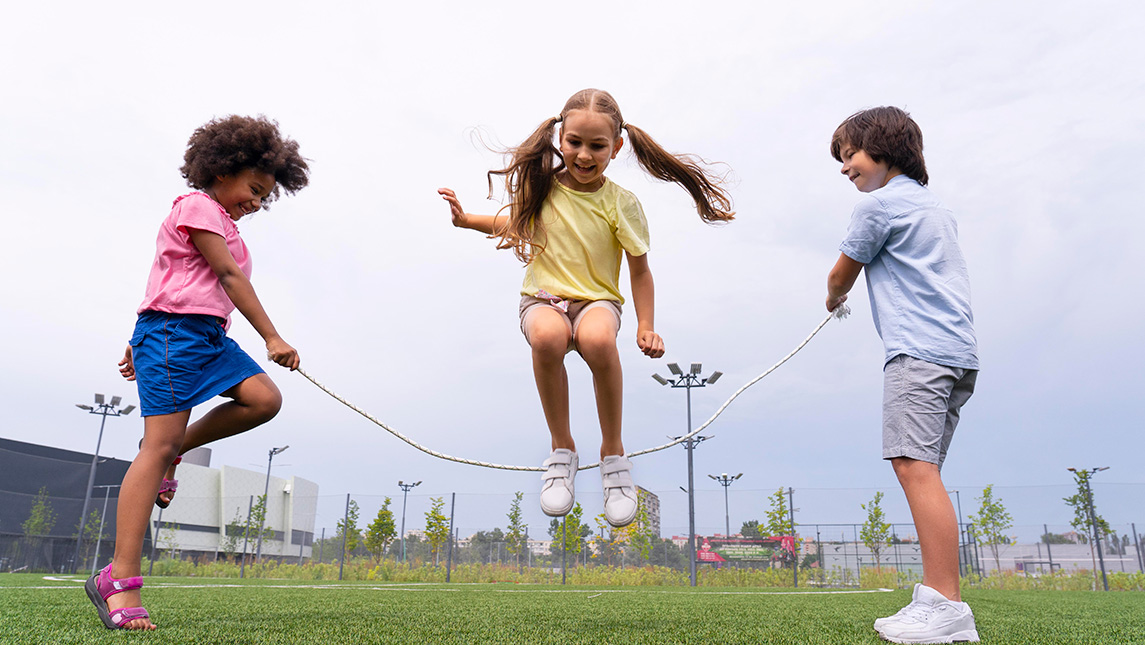Visit an elementary school playground during recess and you’re likely to encounter a few out-of-breath children playing with friends. But if their breathlessness is coupled with other symptoms, such as chest tightness or wheezing, it could be a sign of a more serious problem.
“I see this all the time with kids – they say ‘I wheeze all the time,’” says Dr. Colleen McGovern, an assistant professor in the School of Nursing. “But that’s not what we want. Our goal is for kids to be symptom free.”
McGovern, who spent years working as a school nurse and has asthma herself, says some of these children could be unknowingly suffering from exercise-induced asthma, which is better known in scientific circles as exercise-induced bronchoconstriction, or EIB.
Experts estimate that anywhere from 3 to 35% of children have EIB. One of McGovern’s main goals is to develop interventions that can help children with asthma and EIB understand their condition and breathe easier.
“The initial driver for me to pursue a Ph.D. and conduct meaningful research was because I wanted to help kids on a broader scale,” she says. “I want to teach kids about asthma and coping skills.”
The basics of EIB

The term “exercise-induced bronchoconstriction” has its roots in the Greek word “bronkhos,” which means windpipe. A child with EIB may experience a trigger during exercise – such as cold air or an allergen – that can result in irritation to and constriction of the muscles surrounding the airway.
“When you’re inhaling and exhaling at a greater rate – as happens during exercise – it’s increasing your exposure to whatever your triggers may be,” explains Dr. Stacey Marye, a visiting assistant professor in the School of Nursing who also researches child asthma.
This narrowing of the airway can make it challenging for a child to breathe while exercising, like trying to suck liquid from a pinched straw. This constriction can lead to a variety of symptoms, including fatigue, wheezing, and persistent coughing that require medical attention.
McGovern emphasizes that it is important for children with these symptoms to be evaluated by a clinician and receive appropriate treatment for both the short and long term.
Challenges facing children

Receiving an EIB diagnosis and appropriate treatment can unfortunately be an uphill battle for children, Marye and McGovern say. For one, many people do not know EIB exists – or understand that it can be a chronic condition.
Others may view a child with EIB as less athletic or less capable of exercise. “A common misconception is also that you’re out of shape, or somebody will interpret their own breathlessness, wheezing, or coughing as being out of condition,” says McGovern.
In fact, many Olympic and other professional athletes have EIB and go on to thrive in their chosen sport.
Beyond these stereotypes, children may also face internal barriers to sharing their symptoms. They may feel fear of being seen as different from their peers – that’s where McGovern’s research comes into play.
Breathing easier with EIB
McGovern develops interventions for 8- to 12-year-old children who have asthma, EIB, and anxiety/depressive symptoms. She uses a small group approach where students receive education, skill-building techniques, and support from their peers.
“I want to get to these kids before they start ignoring their symptoms,” she says. “I want to teach them what their symptoms are, what to do, and not to ignore it.”
McGovern’s past research, published in the Journal of School Nursing, suggests that this integrated approach can help improve children’s knowledge about their condition and treatment of it.
This systems approach extends beyond the classroom. “There needs to be communication back and forth between the provider and the parent, and the parent and the school nurse or school professionals,” Marye says.
A child speaking up can be a key step. But schools, doctors, and families all play a role in making sure children receive the treatment they need to lead healthy, active lives – on and off the playground.
Story by Rachel Damiani
Featured photo courtesy of Freepik
Headshots courtesy of the School of Nursing



